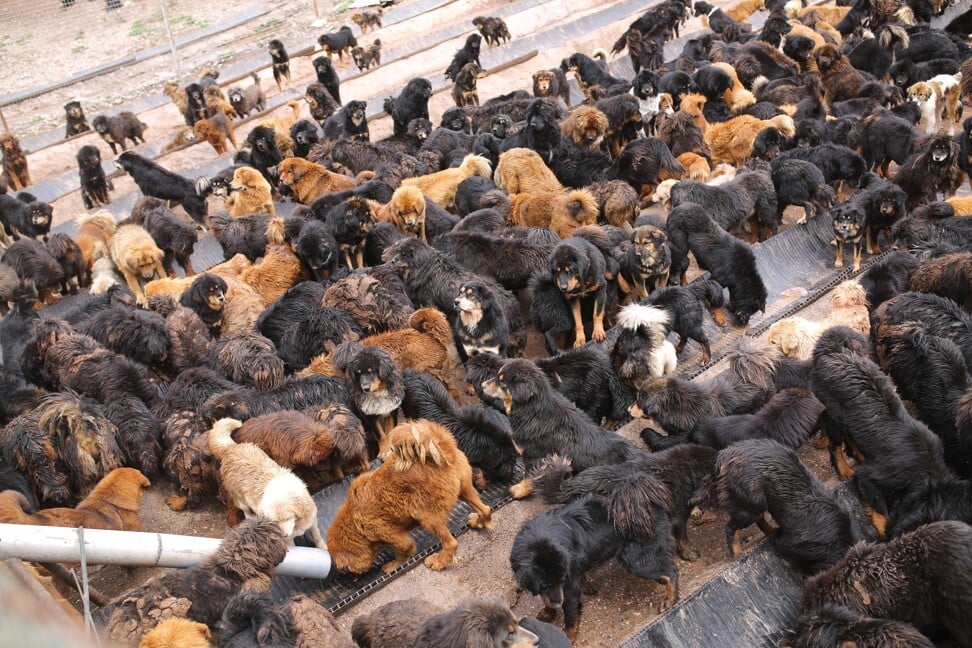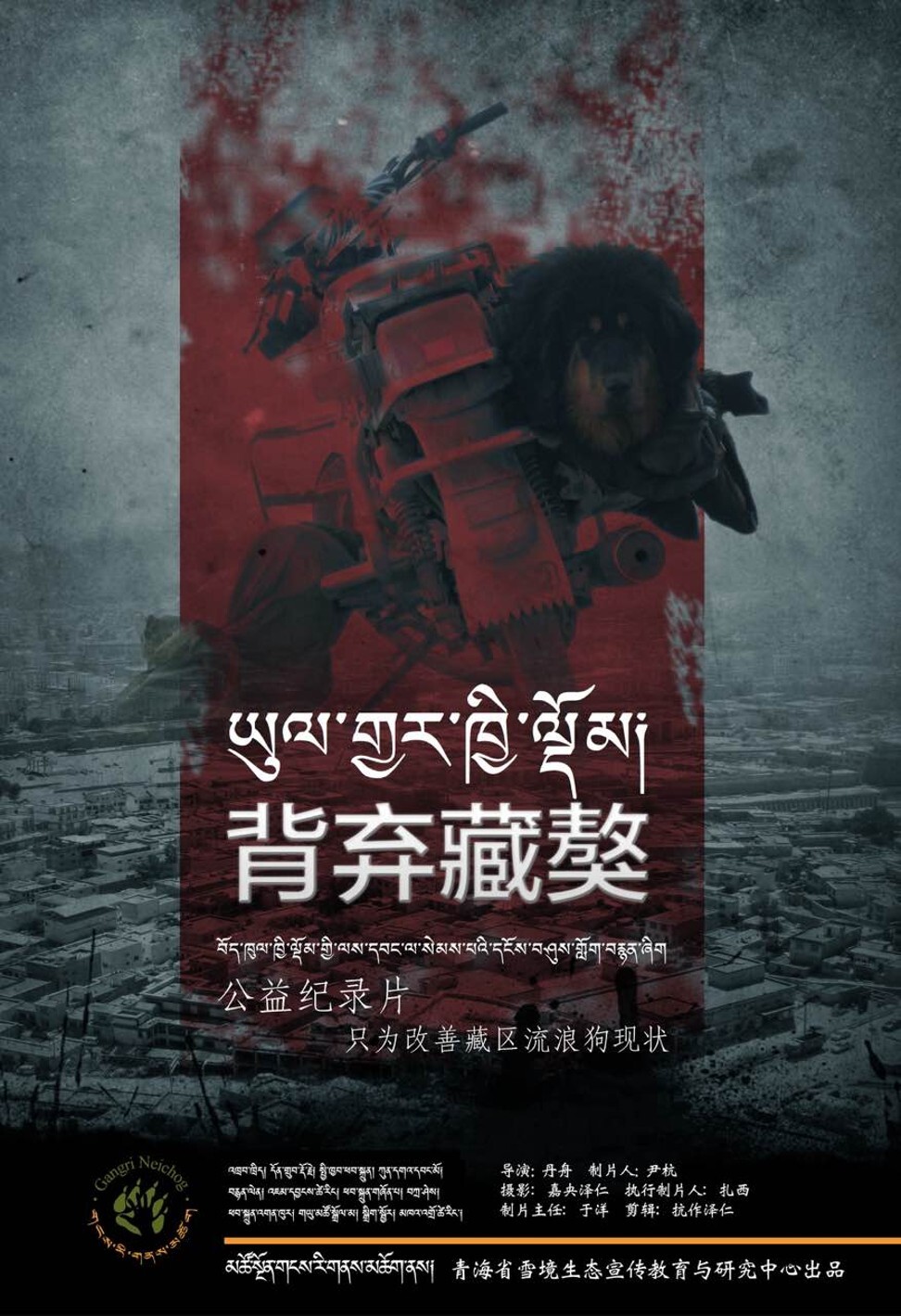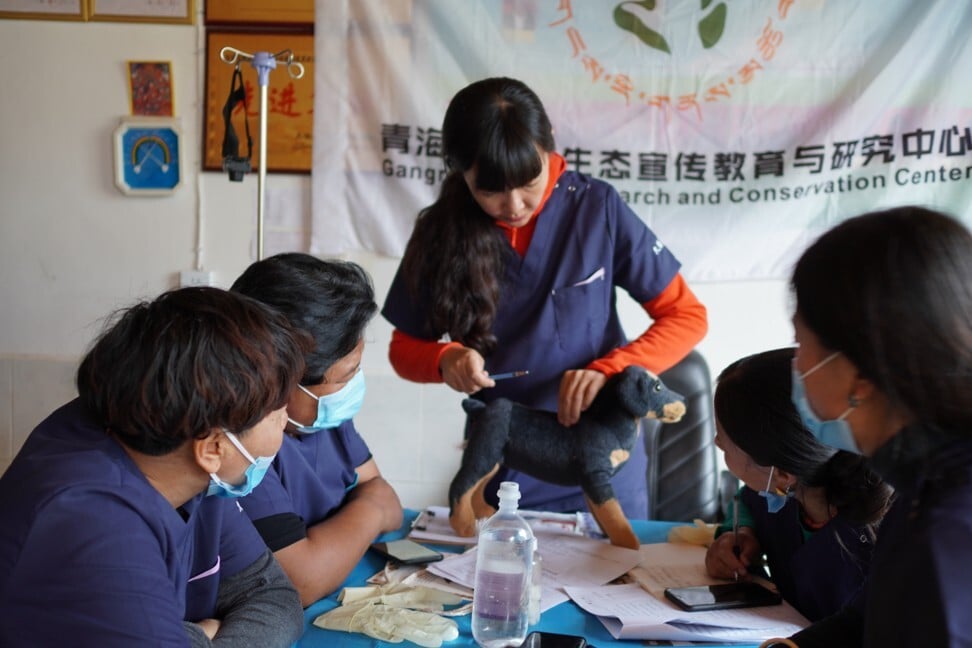
Tibetan mastiff dogs ravaging wildlife, mauling people, and spreading disease in China after collapse of pet market
- Tibetan mastiffs were once a status symbol in China, selling for up to US$2 million until the market collapsed
- Breeding centres shut, and thousands were abandoned on the Tibetan Plateau, where they are a danger to wildlife and humans
WARNING: STORY CONTAINS DISTRESSING LANGUAGE
Once a prized breed for which dog owners would pay several million yuan, the Tibetan mastiff is no longer a fashionable pet in China. Thousands of them have been abandoned to roam the Tibetan Plateau, where they spread disease and attack anything in their path.
In 2014, Yin Hang set up the Gangri Neichog (“Sacred Snowland”) Research and Conservation Centre to cater to the welfare of abandoned mastiffs and other animals on the plateau.
She had previously worked in snow leopard conservation in Qinghai province in northwest China, and says she became aware of the mastiffs’ plight after watching a video of a snow leopard being harassed by a pack of the large dogs.
“Several mastiffs surrounded the leopard, trying to get the blue sheep it had just killed,” she says, referring to a wild, goat-like mammal that makes up most of the leopard’s diet. “The leopard eventually gave up the sheep and left. Such things happen near monasteries a lot. The stray mastiffs have an adverse impact on the ecological food chain and endangered animals.”

Descendants of dogs bred for shepherding and hunting by nomadic tribes in Central Asia and Tibet, mastiffs are large, fiercely loyal and ferocious.
Liu Mingyu, a researcher in Peking University’s School of Life Sciences who has been studying the threat posed by mastiffs to snow leopards in Qinghai’s Sanjiangyuan region since 2014, estimates there are as many as 160,000 stray dogs in the region, of which 97 per cent are of Tibetan mastiff lineage. The big cat is a critically endangered species, with only about 2,000 left in China.
In a 2018 United Nations forum on wildlife conservation held in New York, Liu said his research, using neck trackers, infrared cameras, and analysis of faeces, showed that mastiffs were present in 17 per cent of snow leopard habitats.
Hong Kong police dog at airport tests positive for Covid-19: source
“Tibetan mastiffs have become the most numerous and fastest breeding animals among all the carnivores on the Tibetan Plateau. Since they live in packs, they pose a threat to wildlife because they compete with them for food and living space,” he told the forum.
Tibetan villagers have reported frequent sightings of mastiffs chasing bears, eating poultry, foxes and sheep, and attacking humans.
In 2016, an eight-year-old girl in Qinghai was mauled to death by a stray female with pups in tow.

Authorities in the Tibet autonomous region, meanwhile, reported a monthly average of 180 human injuries caused by the strays.
Besides rabies, the mastiffs also infect humans with hydatid disease, an infection in the dogs caused by the larvae of a tapeworm which spreads through contact with food, water or soil.
The mastiff’s reputation as an indiscriminate killer and a menace is a far cry from the esteem in which the breed was held until fairly recently.
In 2014, the Qianjiang Evening News reported that a Tibetan mastiff puppy had sold for almost US$2 million in what was then the most expensive dog sale ever. A property developer paid 12 million yuan (US$1.8 million) for the one-year-old golden-haired mastiff at a luxury pet fair in the eastern province of Zhejiang.
“They have lion’s blood and are top-of-the-range mastiff studs. Pure Tibetan mastiffs are very rare, just like our nationally treasured pandas, so the prices are very high,” said the dog’s breeder, Zhang Gengyun.

With males standing at least 26 inches (66cm) tall at the shoulder and weighing more than 100 pounds (45kg) – and with manes lending them a passing resemblance to lions – Tibetan mastiffs were highly respected in China during the Yuan dynasty (1271-1368), when they were trained for use in the army.
In folklore, a Tibetan prince was turned into a mastiff by a snakelike monster when he tried to steal barley seeds from it to save his people from starvation.
The dog travelled a long distance to take barley seeds back to the people. By way of gratitude, villagers today feed mastiffs tsampa – a porridge made with nutty flour made from roasted barley – when there is a bumper harvest.
A craze for breeding Tibetan mastiffs took off in the 1990s and peaked around the mid-2010s, when spiralling auction prices for specimens of the breed led to the opening of an increasing number of breeding centres. Yin Hang says it was seen as a way of getting rich quick.

“But very few people actually reaped big financial rewards from them. There was an excess supply of dogs. People can’t afford to keep them, and they abandon them. Many also get left behind when locals move to cities.
“Local Tibetans don’t want to euthanise the animals due to their religious beliefs. [In the case of non-religious breeders] there are instances where the dogs are sold for meat.”
Dog’s life for China animal rescuer who shares her home with 1,300 strays
According to state broadcaster CGTN, by 2015, 2,000 of the 3,000 Tibetan mastiff breeding centres in Tibet had closed because of the plunge in prices – from a high of US$2 million to less than US$1,500.
Yin’s Gangri Neichog has recruited 30 veterinary surgeons from around China to train local Tibetan vets in the procedure of neutering strays. The organisation started a digital training course in 2019.
“The local vets’ usual duties include vaccinations for disease prevention. They don’t have a very good grasp of surgical know how,” she says.

In 2017, Gangri Neichog made the documentary Abandoned Tibetan Mastiffs, in which monks and volunteers are interviewed, and visits made to dog shelters, to shine a light on the problem.
In the film, a villager named Sangzhou explains how he became a volunteer after witnessing a barbaric act involving one of the dogs.
“I used to be a mastiff trader, and earned some money. Once I went to visit a guy who kept 60 mastiff bitches in his courtyard. The people there brought a dog in and hammered it on the head until it was unconscious. Then they hung it up on a metal hook and skinned it alive from the neck down,” he says.

“The dog, still writhing, was then put on a black board but it still tried to stand up. I asked why they didn’t just kill it instead of subjecting it to such misery. He told me the dog meat tastes best and is most nutritious when it’s killed like that. I felt heartbroken that day and cried for a long time.
“Since then, I swore I would never again in my life sell dogs and would try to help these helpless creatures.”
Sangzhou is seen in the documentary collecting food from butchers to feed the dogs, fending off people trying to steal the animals, and treating injured animals at his home, chanting Buddhist prayers for dead mastiffs and taking them into the hills for a sky burial.
Dog-walking ban, backed by threat to kill pets, withdrawn in China
Yin says a mastiff adoption programme organised by Gangri Neichog in 2017 placed almost 500 dogs in 400 households in two Tibetan villages.
“Our biggest obstacle … is that we can go out on such excursions for only a few months of the year. For every excursion, we can only visit several villages. [However], locals are receptive to the idea of adoption because they think such an approach is best for the dogs and the local ecology.”

Bowie Leung, spokeswoman for the Caucasian Ovcharka & Tibetan Mastiff Club Hong Kong, says she has saved many dogs that have been abandoned in the city.
“Hong Kong lacks space. The owners lack patience, money and time to take care of them. Vets’ bills for them are more expensive than those for smaller breeds,” she says. “For example, to treat gastroenteritis, it costs HK$800 (US$100) for an ordinary sized dog. For mastiffs, the bill will be HK$2,400.
“If they fail to take them out for walks, the dogs become even more feral. Their owners cannot handle them and reach out to me. There are many cases of dogs being euthanised.”
After handsome Tibetan lights up the internet, Chinese regions look for influencers
Leung asks people to think twice before buying mastiffs as pets.
“They are very cute when they’re pups. But they will grow to be a beast weighing up to 200lbs [91kg]. Potential owners have to consider whether there are neighbours around them, whether they have enough strength to walk them on a leash.
“My late pet mastiff was unfriendly towards outsiders. Even my training didn’t change his personality. I had to walk him at 2am. Keeping mastiffs as pets involves sacrifices.”

